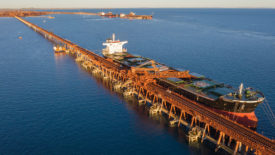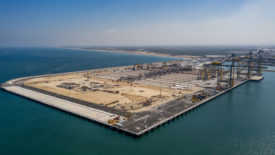Home » Airport/Transit
Articles Tagged with ''Airport/Transit''
Orlando International Airport's $2.8-billion Terminal C propels the growing airport into the future in functionality and design
Read More
2023 Northern California Best Projects | Project of the Year
SFMTA Central Subway Underground Stations Tunnels to Excellence
Read More2023 MidAtlantic Best Projects
Award of Merit Airport/Transit: Yellow Line Tunnel and Bridge Rehabilitation
October 16, 2023
2023 MidAtlantic Best Projects
Award of Merit Airport/Transit: Maryland Transit Administration MARC Riverside Heavy Maintenance Building
October 16, 2023
2023 MidAtlantic Best Projects
Best Airport/Transit: WMATA Station Platform Rehabilitation Contract 4
October 16, 2023
2023 Southern California Best Projects
Best Project - Airport/Transit: Toyota Logistics Services Vehicle Processing and Distribution Center
October 16, 2023
ENR Northwest Best Projects
Best Airport/ Transit: North Satellite Modernization Project
December 12, 2022
Global Best Projects
Award of Merit Airport/Port: Seaplane Facilities at Velana International Airport
December 8, 2022
Global Best Projects
Award of Merit Airport/Port: Cape Lambert – Jetty and Dolphin Upgrade Project
December 8, 2022
The latest news and information
#1 Source for Construction News, Data, Rankings, Analysis, and Commentary
JOIN ENR UNLIMITEDCopyright ©2025. All Rights Reserved BNP Media.
Design, CMS, Hosting & Web Development :: ePublishing











